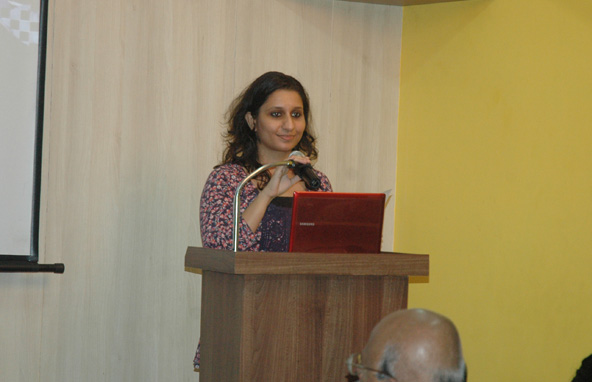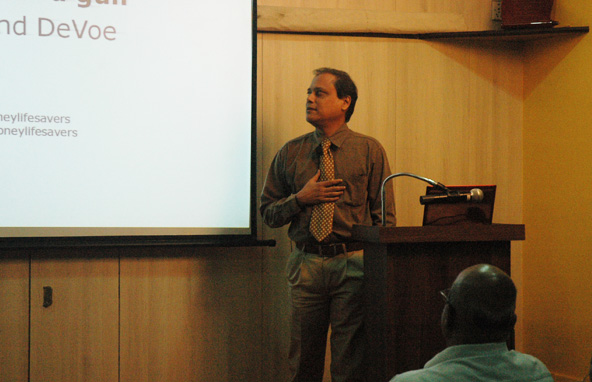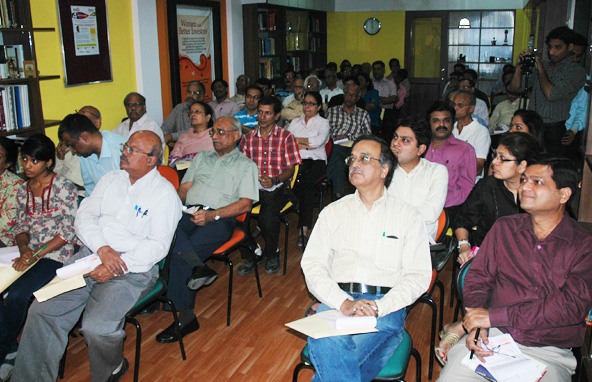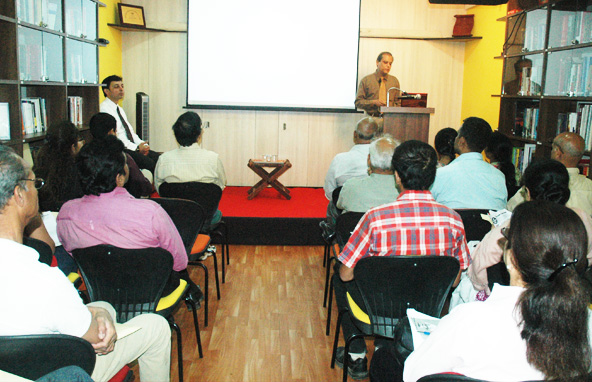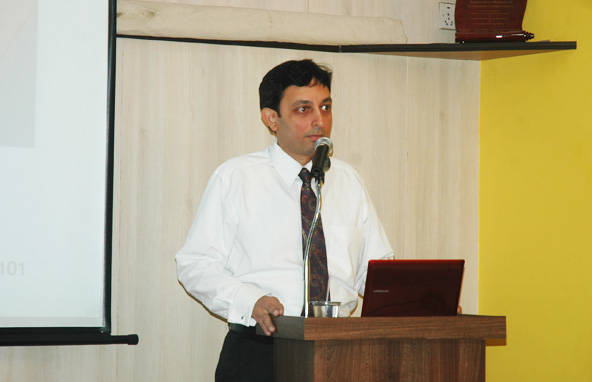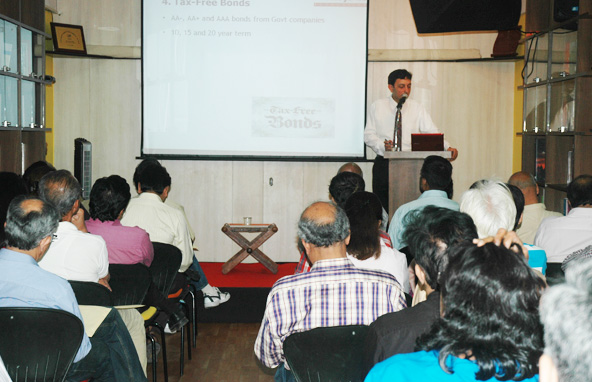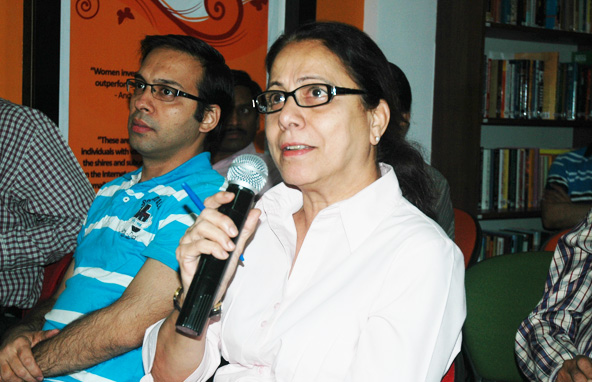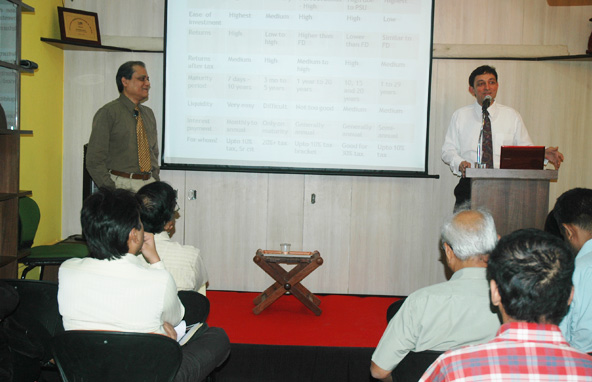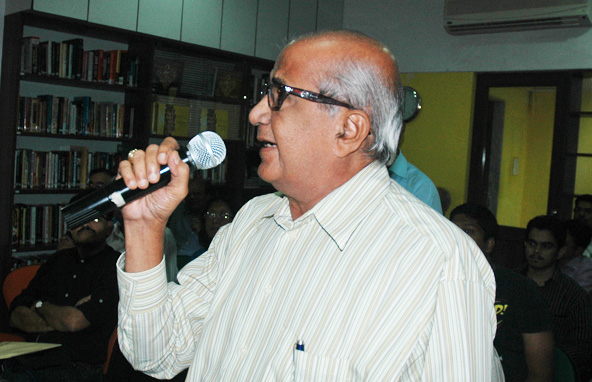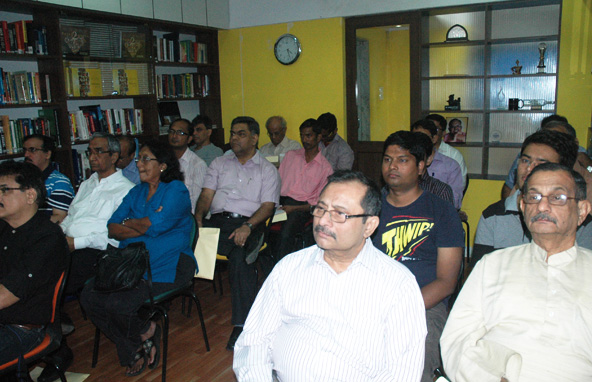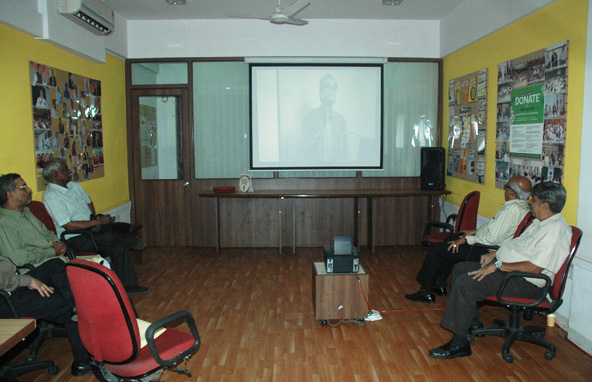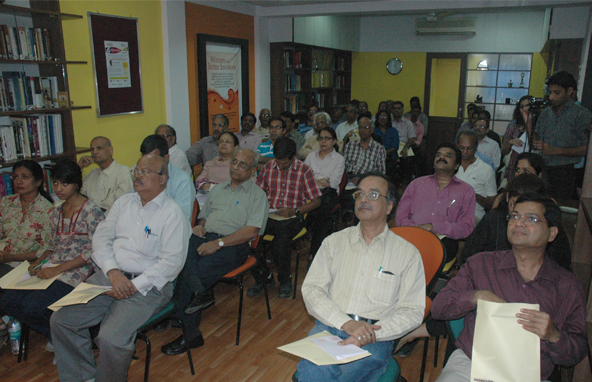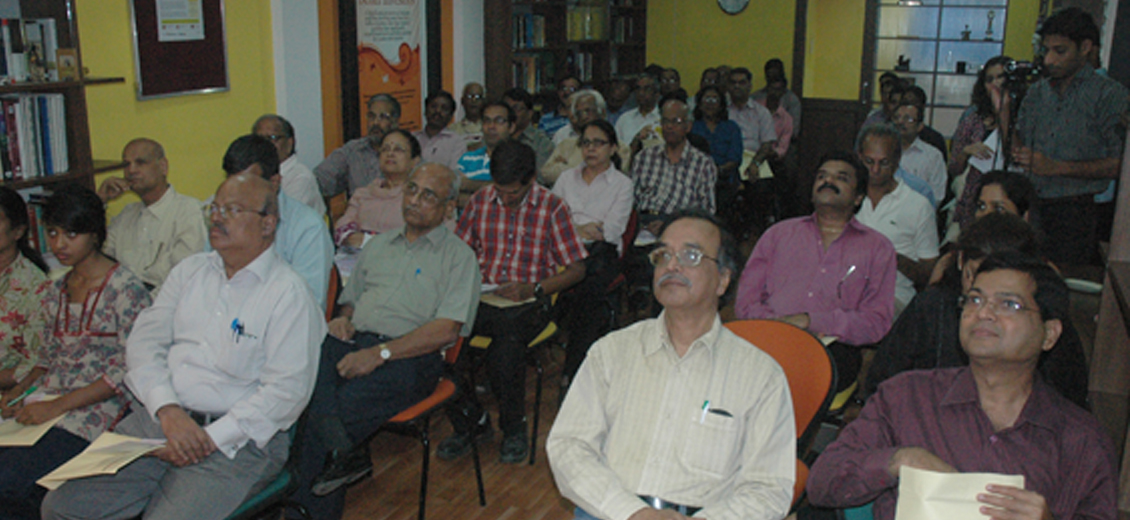
Moneylife Foundation hosted its 196th seminar with the event titled “Understanding Fixed Income Securities. High Returns, Safe Capital” conducted by Debashis Basu, editor, Moneylife and Raj Pradhan, columnist at Moneylife, who writes on insurance, taxation and fixed income products. Mr Basu explained the different types of fixed income products available and the returns one can expect. He also explained how much should allocate to different investments of equity and debt based on your age. Post retirement investment options were also discussed.
Mr Pradhan gave insights to the audience on different investment options to benefit from high rates regime. One can choose from fixed-deposits (FD) of banks, corporate bonds/non-convertible debentures, tax-free bonds, fixed maturity plans (FMP) of mutual funds and G-Secs. Reserve Bank of India’s (RBI) Inflation Index Bonds (IIB) may not have fixed returns, but is a new entrant worth considering for retirement savings instead of relying on bank FD. RBI should consider coming up with non-cumulative IIB as it will help senior citizens who rely on steady income from investments. With IIB, you have an option for getting returns beating inflation without any risk of capital. The taxation is still a sore point.
There finally seems to be some respite in the economy with the retail inflation for the month of December 2013, as measured by the consumer price index (CPI), sliding to 9.87% from its previous level of 11.24% in November. With hopes of RBI cutting repo rate possibly after couple of months, there is possibility of bond yields softening. Will you be able to make capital gains with taxable and tax-free bonds purchased today? If so, what are your options for taxable and tax-free bonds in primary and secondary market? How will you evaluate the different debt investment options you have today?
For those in 20% and especially 30% tax bracket, an excellent option is tax-free bonds from government companies. You have an option for long-term investment as the bond terms are 10, 15 and 20 years. It helps with mitigation of reinvestment risks. Getting a near 9% pa tax free returns without reinvestment risk for 20 years from AAA rated government companies should definitely be scooped by savers for their debt instrument portfolio.
FMP has a great tax advantage, but you need to choose carefully. Choose FMPs with high-rated securities investment. Make sure you don’t need the money in the interim. Assume that your investment will be illiquid till the FMP matures. G-secs are rarely explored as an investment option by retail investors, due to numerous reasons. The current scenario of the bond market, however, offers a unique opportunity to savers to add G-secs to their portfolio. The good news is that you have the option to buy G-secs and get it added to your regular demat account, which holds other asset classes like equities/bonds.
Mr Basu explained how over different age groups from 21 to 60 years, one can invest in a mix of equity and fixed income products. Stocks and equity funds over the long run of 5-10 years have more often than not beaten inflation. Other products like scheduled commercial bank FDs and other fixed income products may not deliver high returns but offer safety of capital.
For those who have retired, Mr Basu advised the audience to create a two-part portfolio. One, containing 60% of the total corpus to be invested in fixed income securities such as bank and corporate fixed deposits and bonds to garner safety for the portfolio. And the second, containing 40% of the total corpus should be invested in safe equity mutual funds, which would work towards beating inflation.
For the fixed income part, The different investment options needs to be evaluated for parameters such as safety, ease of investment, returns, liquidity, interest payment options and suitability based on your tax bracket. Each investment option was discussed in detail for its advantages and disadvantages. You can’t get best of everything in one instrument and hence there are good reasons to understand all the options and allocate your money in different options based on your risk appetite.


